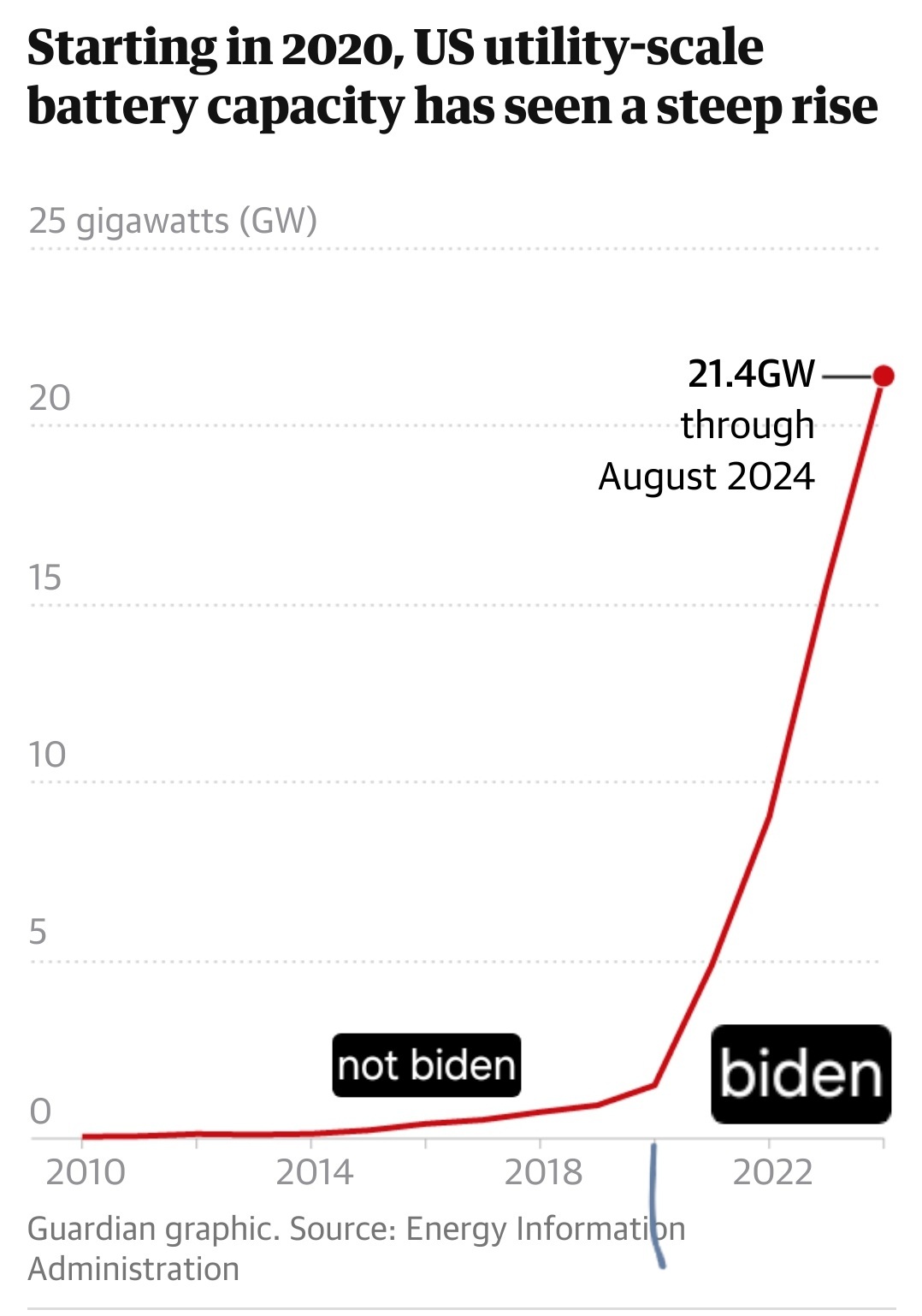- cross-posted to:
- climate@slrpnk.net
- energy@slrpnk.net
- cross-posted to:
- climate@slrpnk.net
- energy@slrpnk.net
Pace of growth helps maintain renewable energy when weather conditions interfere with wind and solar
Faced with worsening climate-driven disasters and an electricity grid increasingly supplied by intermittent renewables, the US is rapidly installing huge batteries that are already starting to help prevent power blackouts.
From barely anything just a few years ago, the US is now adding utility-scale batteries at a dizzying pace, having installed more than 20 gigawatts of battery capacity to the electric grid, with 5GW of this occurring just in the first seven months of this year, according to the federal Energy Information Administration (EIA).
This means that battery storage equivalent to the output of 20 nuclear reactors has been bolted on to America’s electric grids in barely four years, with the EIA predicting this capacity could double again to 40GW by 2025 if further planned expansions occur.
I’m totally struggling with the mixed units here: potential energy being compared to power. “How much hp does your car have?” “A tank of gas.” Wut?
This line right here: “battery storage equivalent to the output of 20 nuclear reactors.” I suspect the author has considered GW with GW/hr…
Batteries have output power capacities as well as storage capacity. For grid-scale applications it’s common to list both. The EIA announcement that this article is referencing only focused on power capacity, which is directly comparable to a traditional power plant. The EIA could have provided some additional information, but the article is technically correct and doesn’t mix units.
the chart is in GW, not GWh. energy would be more useful there, because these are entirely uncomparable things. NPPs work best at constant high power, batteries can run out in what, 2h at peak power, which might be what they have shown there
It’s a hell of a thing isn’t it, seeing a journalist speak nonsense this confidently
This is sadly par for the course in green tech articles. Journalists who flunked high school sciences should not be reporting on this stuff, or at least consult with someone who has even a passing knowledge of physics.
Now regarding actual storage amounts, I have noticed utilities seem to target around 4 hours of capacity at full discharge. That seems to be the sweet spot for lithium ion at least. So by that measure, 1 GW would translate to 4 GWh…ish.
These battery farms are more about dealing with spikes in power demand than bulk energy storage. This is still a valuable role in that they can replace peaker plants which are often low-efficiency diesel monstrosities, but we still need something else for the latter application. Mechanical storage schemes like pumped hydro come up a lot in that discussion, though it’s possible something like flow batteries might be a better fit for this than lithium ion if you want to go the battery route?
I’m not an expert on any of this though, so feel free to correct me.
Sorry to insert politics into everything, but the inflection point is pretty clear to me…
graph

Just as a note, the US average power generation also from the EIA is about 477 GW of power so this 20.7 is about 4% of that.
And yes the Units are ridiculous. kilowatts to megawatts to gigawatts in plus million billions and trillion. Blah. Stop switching.





